We’ve all seen them, whether we’re at the range or in a gun shop. It’s just those kinds of things that you wish people understood were not a good idea. And when it comes to the topic of the 1911, I’ve got a list of them.
When Unloading
Some time early in the epoch of the 1911, folks figured out that they could unload by removing the magazine and then, with the palm of their free hand over the ejection port, rack the slide and eject the chambered cartridge into their hand.
In the early days of 1911’s with short ejectors, one could get away with that. Today, most autopistols have longer ejectors. If the slide sticks and the shooter pulls harder and achieves a sudden, sharp rearward movement, there is a chance the primer could be driven into that long ejector and cause an open-chamber detonation. This would not be good.
The brass casing is no longer surrounded by ordnance steel, but rather by the palm of your hand. If everything breaks wrong way, it turns into a miniature grenade that could drive brass shrapnel into the nerves of the palm of the hand. Just eject the darn thing to the floor or the ground. Open chamber detonations are rare, but they can happen. It’s not worth the risk.
There are still some schools that teach their students to unload that way … and there are some schools and police academies that forbid it. This writer is in the latter camp. Saying, “I’ve always done it this way and never had an accident” is like saying “I never wear a seatbelt and never had an auto accident.” The point is, the accident you haven’t had yet is the reason you wear the seatbelt just in case. Same in this regard.
Avoid the Press-Check
“Combat semantics” alert: a chamber check is when you retract the slide slightly to see whether or not there’s a round in the chamber, and a press-check is a specific technique subset of that procedure.
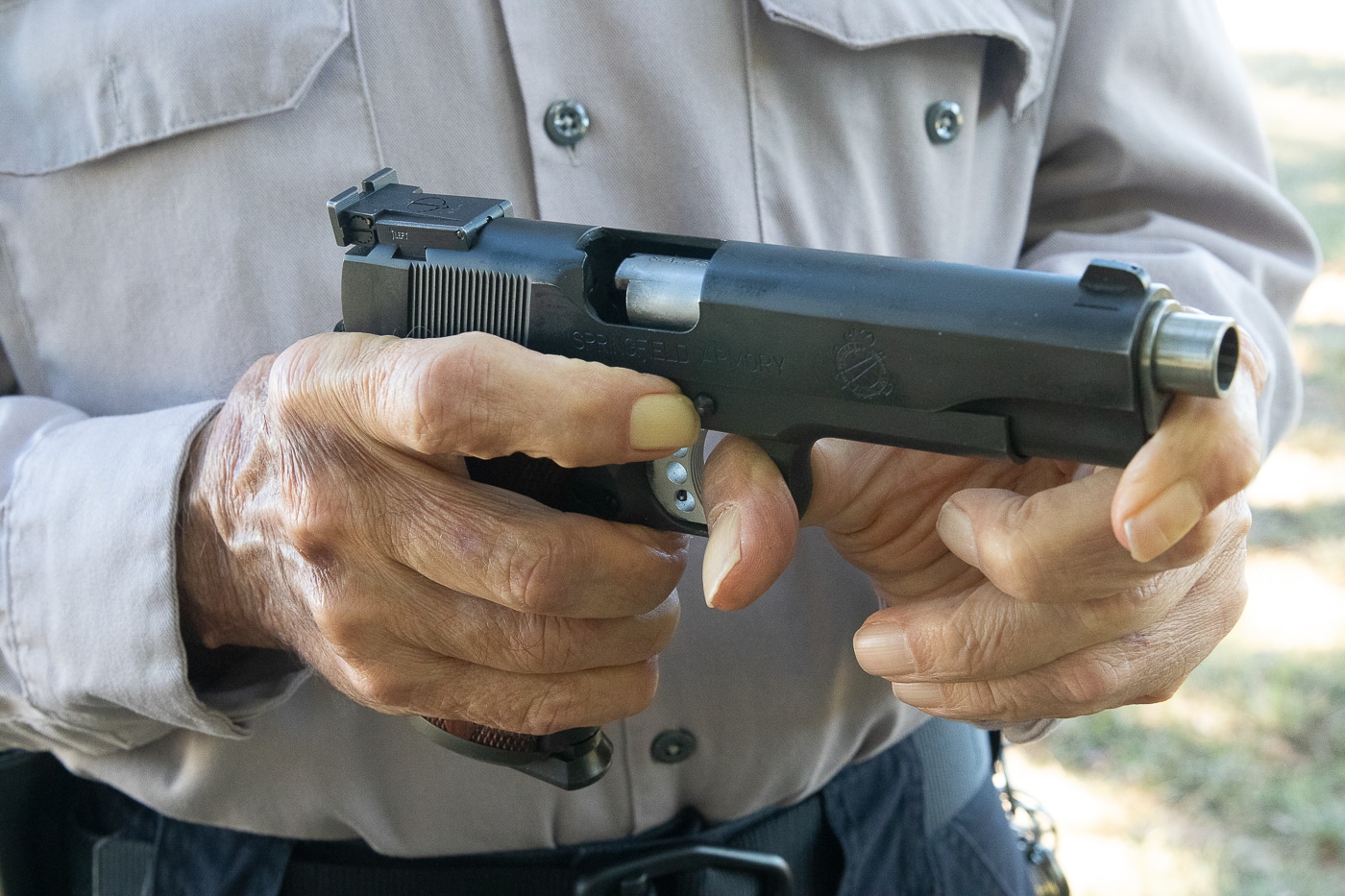
Developed around the 1911 with John Moses Browning’s original design of a short recoil spring guide, the press check has the shooter hold the pistol’s frame normally in the gun hand with the finger clear of the trigger, and the support hand thumb hooks onto the inside of the triggerguard while the same hand’s index finger applies rearward pressure to the bottom front of the slide to bring the slide slightly back.
Let that sink in. Digit in triggerguard of probably loaded weapon. Thumb safety off so the slide of a 1911 or P-35 can move rearward. Firing grasp depressing grip safety. Finger in proximity to muzzle of possibly/probably loaded gun.
What could go wrong?
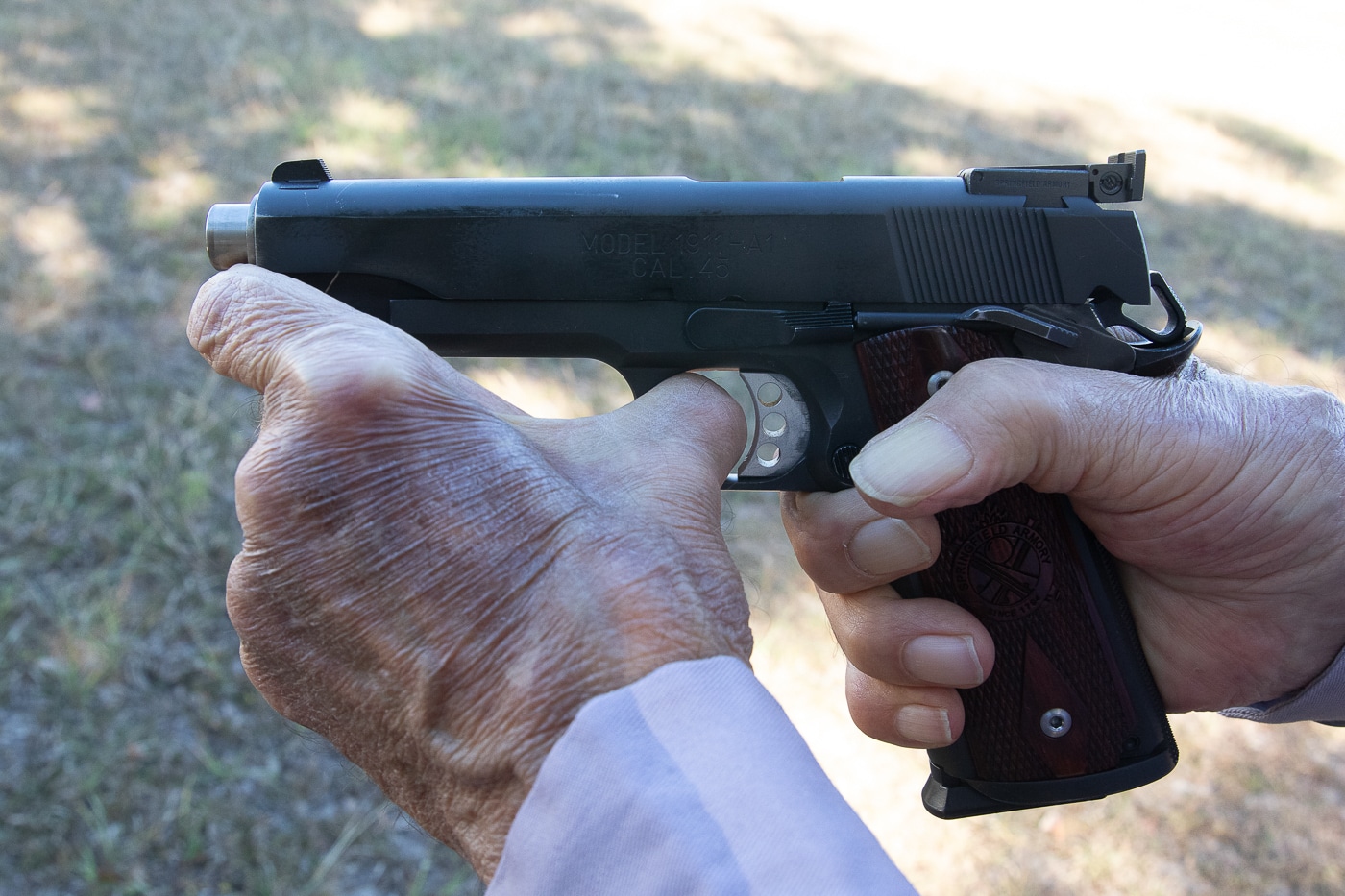
For anyone who came in late, what can go wrong is that a fat or gloved thumb can apply pressure inadvertently to a trigger (particularly a long trigger) inside the 1911’s relatively small triggerguard space. If the hand slips, the slide can come forward under spring pressure, possibly driving the muzzle down right onto that index finger. The slide coming forward pulls the gun and its trigger forward toward that thumb and…BANG.
Even if the finger stays under the muzzle, hot burning gases exiting the muzzle with thousands of pounds per square inch pressure — the muzzle blast we see at night — can take flesh off that finger down to the blackened bone.
Early in my career, I met a top shooter who had blown part of his left finger off doing a press check to confirm that there was a .45 round in the chamber of his 1911. Well, there was … .
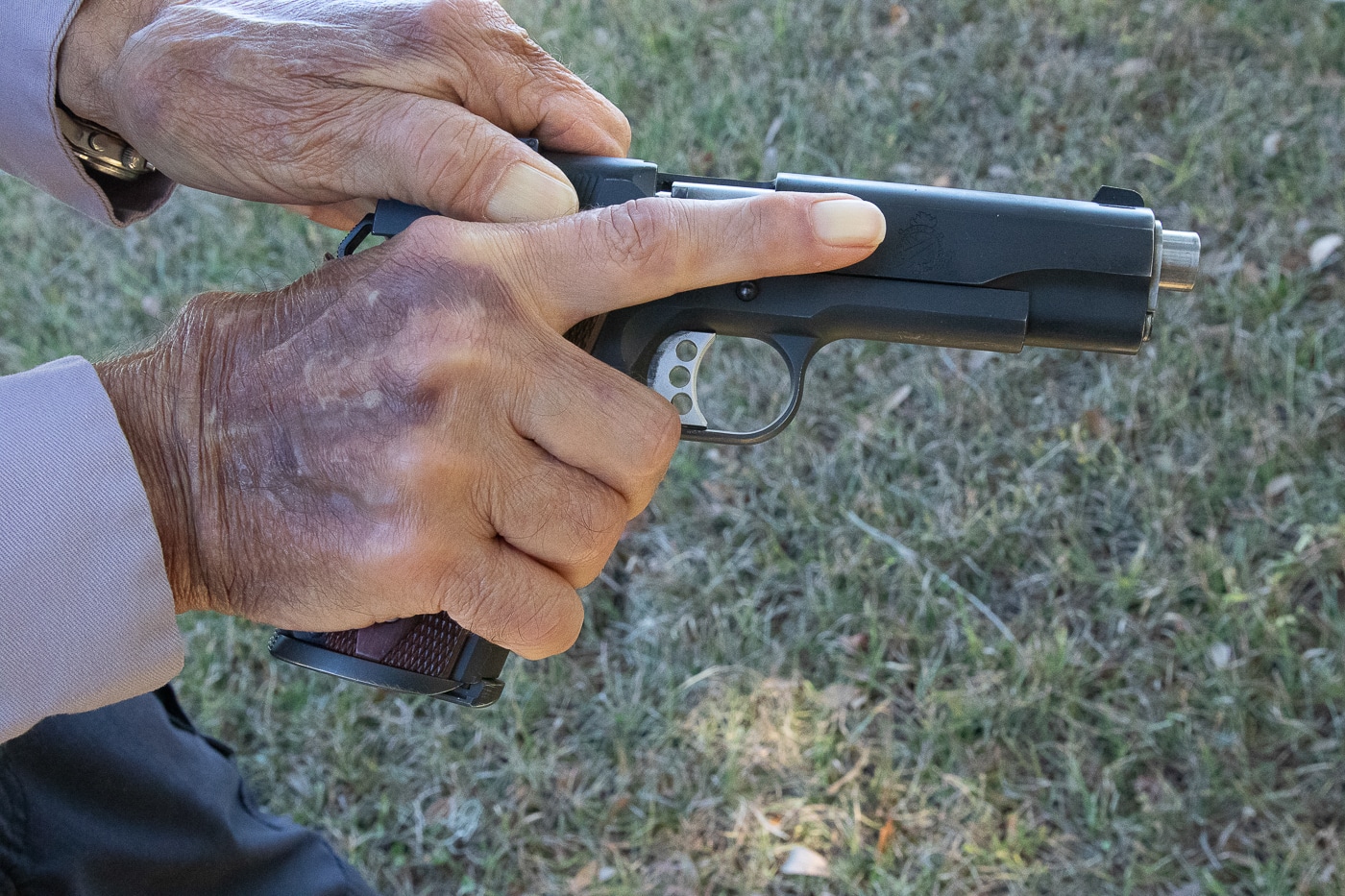
That reminded me why John Browning put the grasping grooves at the rear of the slide, and that’s where I would very strongly suggest your support hand be when performing a chamber check. Working from the rear of the slide will also, unlike the press-check, have commonality of training and work with a 1911 (or any other auto pistol) with a full-length guide rod (FLGR) that prevents a press check. Indeed, one might consider the FLGR a safety feature in this respect.
Trigger Finger in Register…Where?
We all know to keep the finger out of the triggerguard unless and until we are in the very act of intentionally discharging the weapon. Perched on the front edge of the triggerguard is not safe: it holds the finger taut, and a startle response can snap it straight back into the trigger hard enough to cause an unintended discharge.
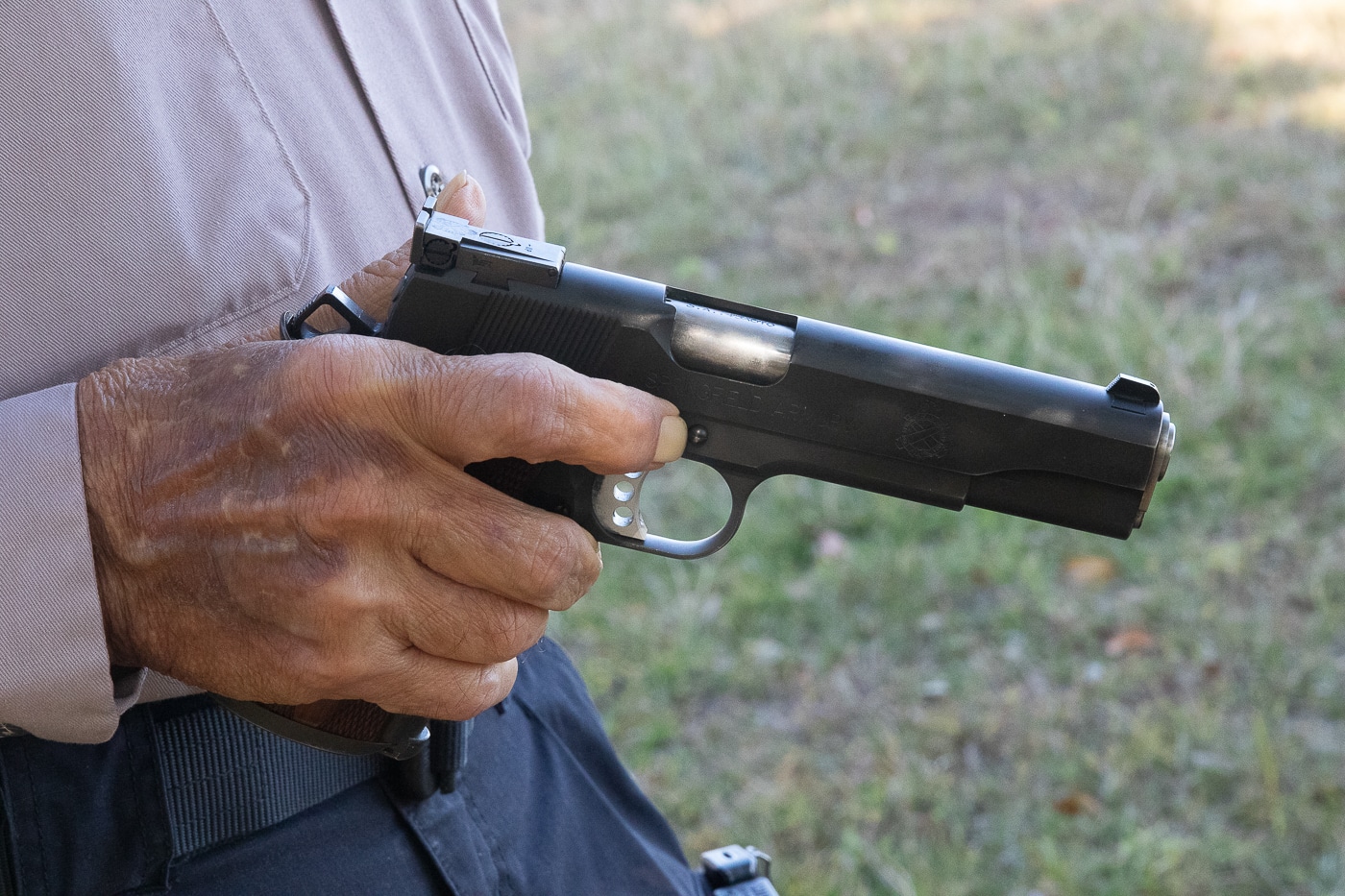
With most pistols, straight along the frame is fine. However, the 1911 and many other pistols have a slide stop stud which protrudes from the right side and functions also as a takedown button. When it gets loose, every now and then a straight finger inadvertently pushes it leftward, and at the first shot the gun will lock up. The right-handed shooter can prevent that by indexing the fingernail of their trigger finger behind that stud, which will also let a long finger get on the trigger a little bit faster when the time comes to do so.
Muzzle Direction
New shooters and those with sub-optimal upper body strength may have trouble racking a slide. When they do, it’s human nature to pull the gun into their center, their abdomen, and align skeleton-muscular support by putting their arms in line with the barrel. This points the gun at anyone next to them (such as on a firing line), at their own forearm, and even at their own torso.

The gun must be pointed downrange or in some other safe direction while working the slide. Techniques for making slide-racking easier would constitute a whole article in and of themselves, and if you’d like such an article, let us know in the comments below.
A Slam Dunk
One of mine, learned from experience and debriefing multiple top gunsmiths, is slamming the slide closed on an empty chamber — particularly with 1911s. One of the world’s most famous 1911 experts is Bill Wilson, who did a whole video on why this shouldn’t be done, augmented with the same advice from handgun guru Ken Hackathorn. Shooting and 1911 expert Guy Joubert and national IDPA champion Austin Proulx have done a similar video with the same advice, as have I and others.

On a 1911, the practice is ruinous to the sear, and on any semi-auto it’s tough on the extractor and the locking lugs. People who defend the practice say things like “Come on, the slide is rocketing back and forth when we shoot it, right?” Or, “That’s how they taught me to do it in the Navy.”
Let me answer those questions. First, during the actual firing cycle, the slide’s forward movement is slowed down and “cushioned” as the slide drives the topmost cartridge past the resistance of the feed lips. Second, as the cartridge moves forward, the extractor slides into the extractor groove between the case rim and the body of the casing, an element of controlled feed that in turn supports the extractor hook. That cushioning and support is absent when the slide slams forward on an empty pistol.
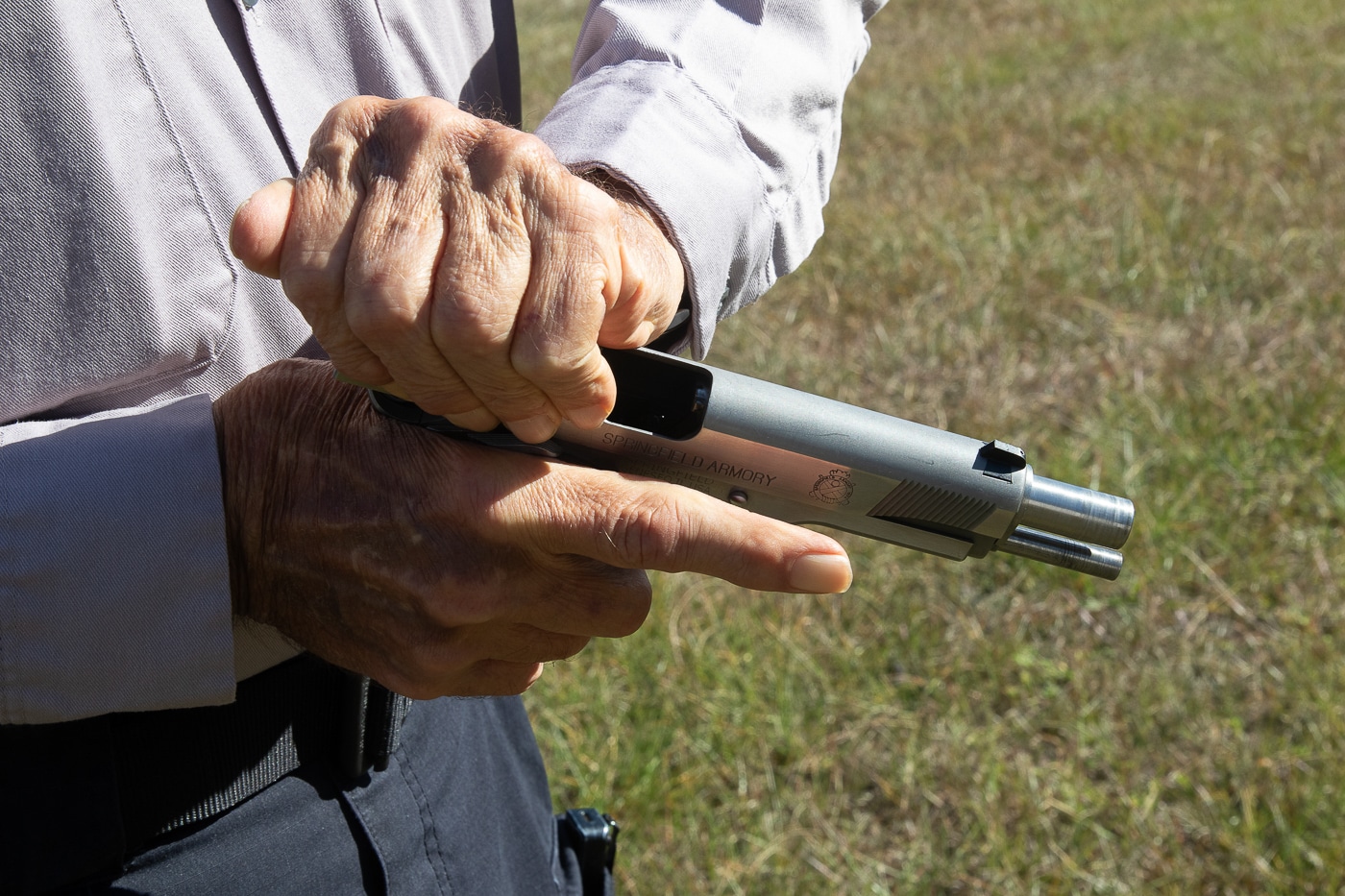
You do want to slam the slide closed when chambering a live round from the magazine, but that’s exactly what the gun was designed for; not slamming closed without a live round cushioning the mechanism.
Even worse is the amateur’s practice of locking the slide open, dropping a live cartridge into the chamber through the ejection port, and slamming the slide closed. Now the extractor is hitting the cartridge rim from the wrong direction, which can cause chipping of the extractor hook. It also forces a 1911’s internal extractor outward in a manner it was not designed for, and it won’t take too much of this abuse to cause the extractor to lose tension and start failing to do its job.
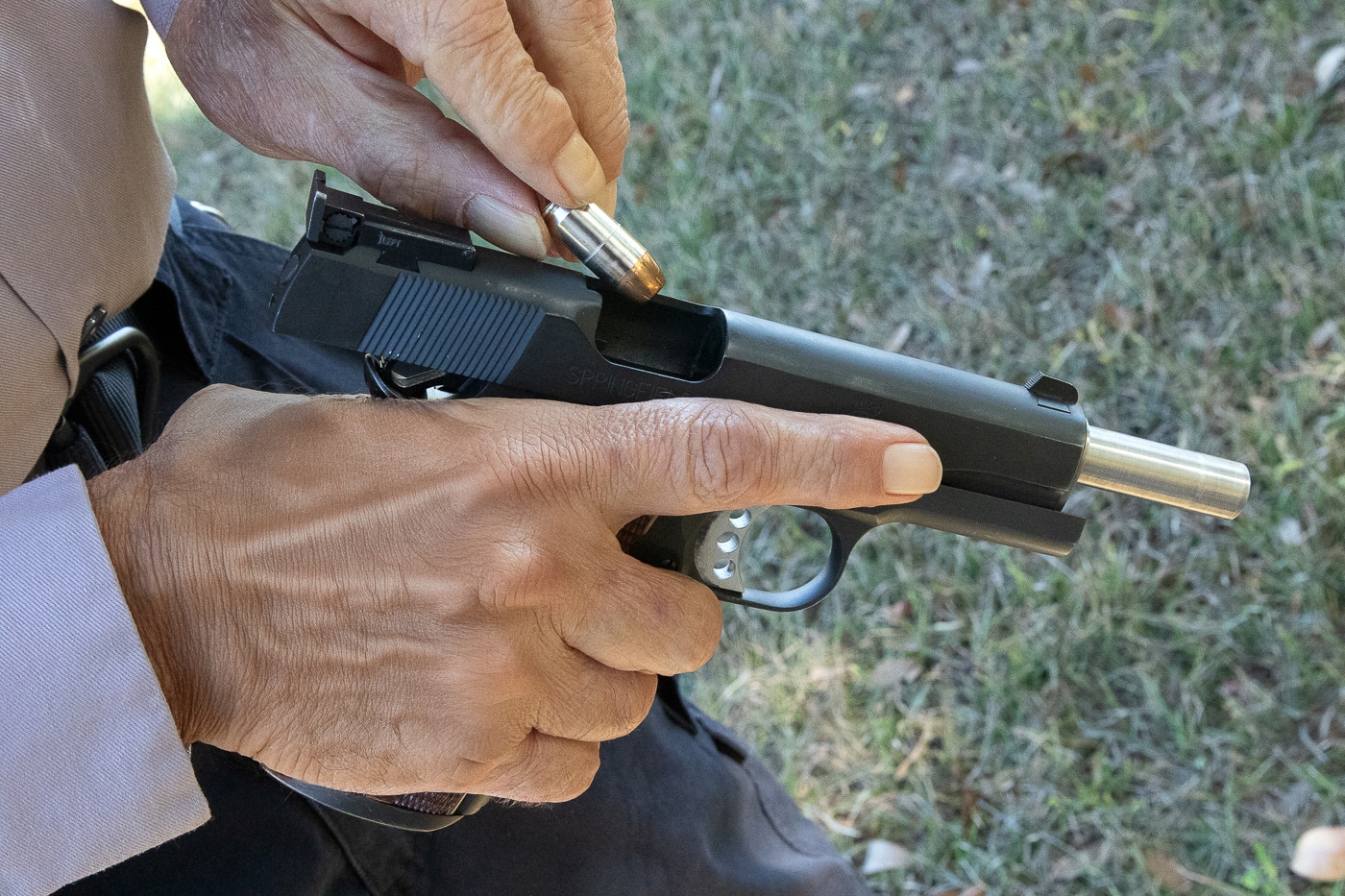
Memorize a simple rule — slam it loaded (to guarantee the cartridge goes fully into battery) but ease it empty. And when loading the chamber, rack a round in from the magazine, on-safe your 1911 and holster it, and then remove the magazine, top it off with one more cartridge, and re-insert it into the holstered pistol.
Conclusion
We all love guns, and we want people to handle them safely and efficiently. We also don’t want anyone to look like a bozo — which they will to any gun-savvy person who sees them do any of these things I’ve covered. So, play it safe, treat those guns safely and with respect, and get out to the range and have some fun.
Editor’s Note: Be sure to check out The Armory Life Forum, where you can comment about our daily articles, as well as just talk guns and gear. Click the “Go To Forum Thread” link below to jump in!
Join the Discussion
Read the full article here


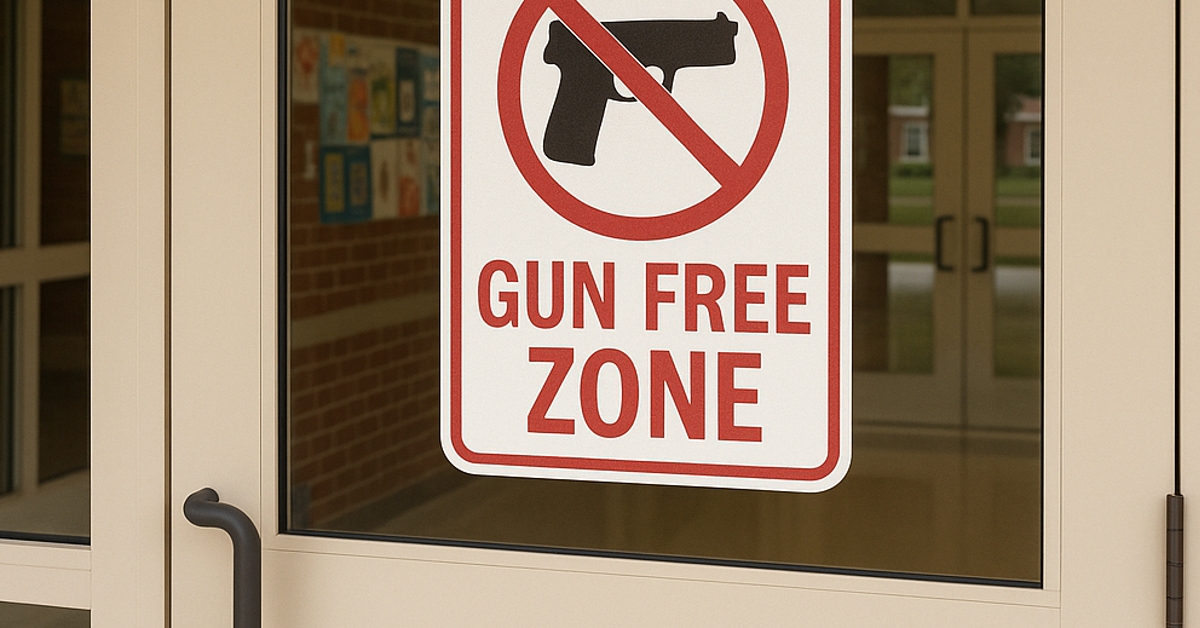



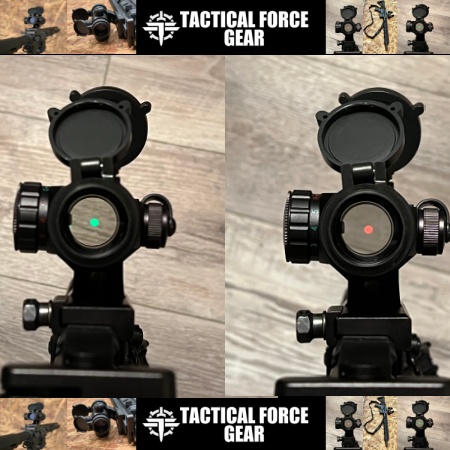

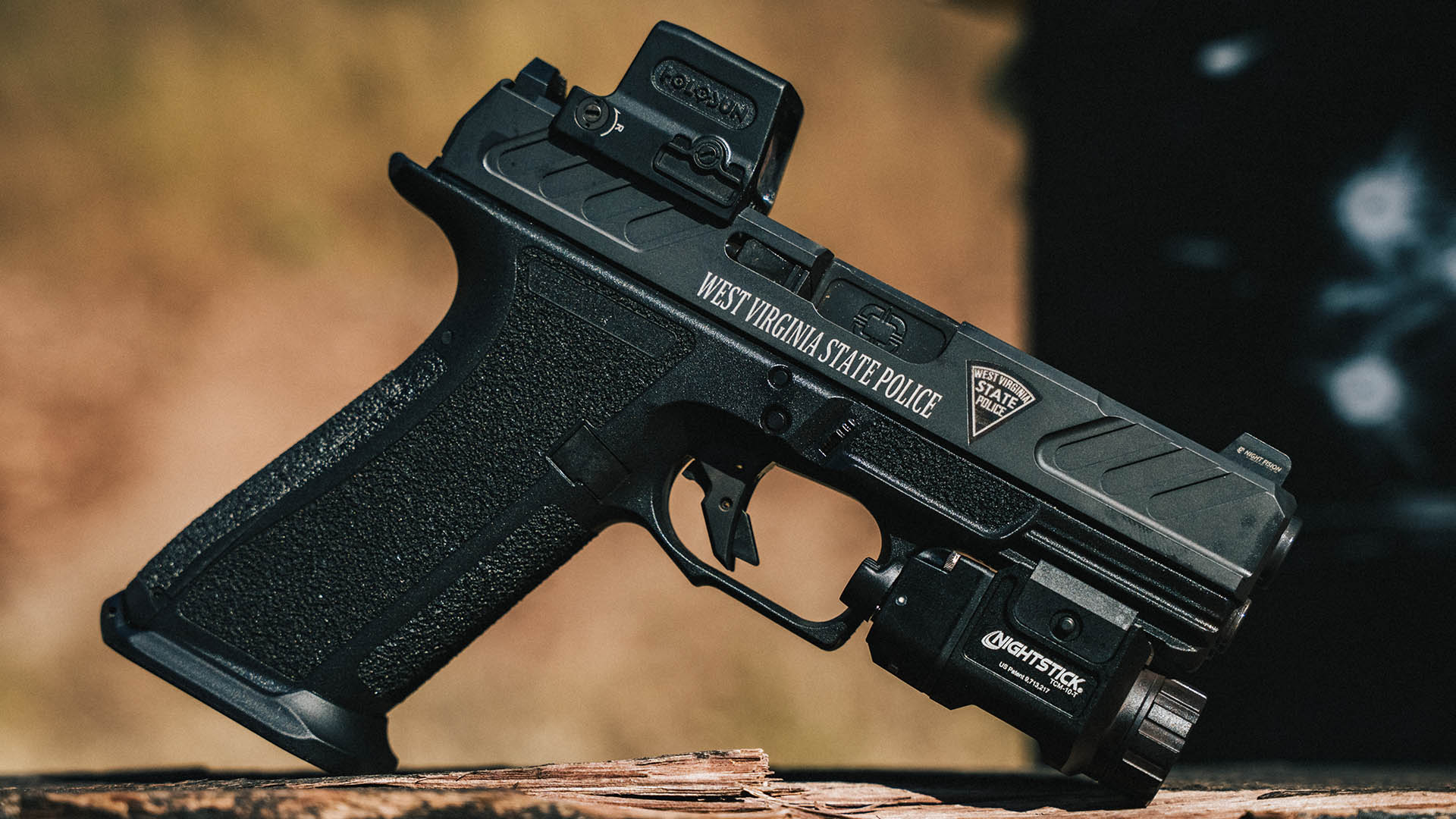





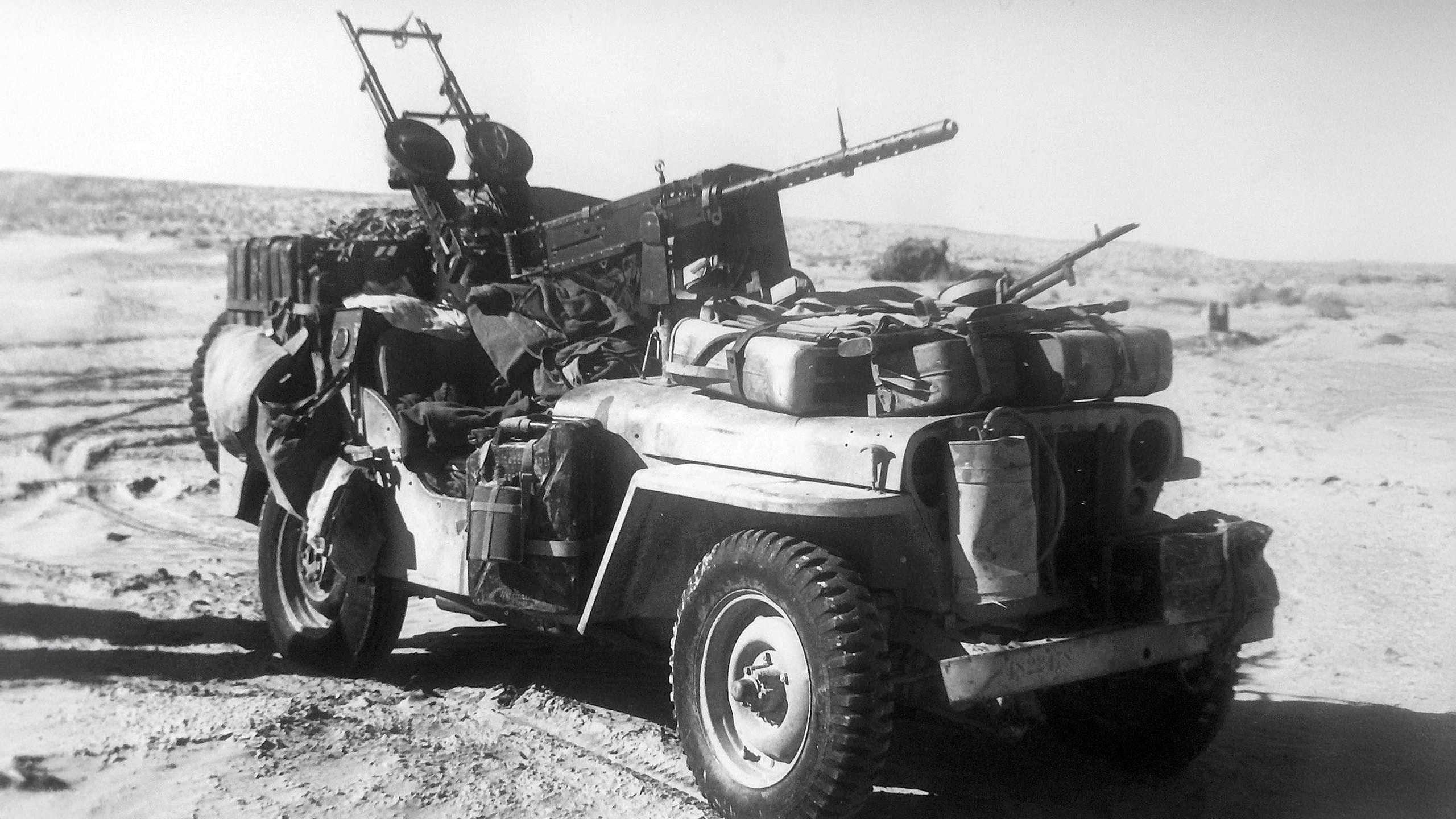
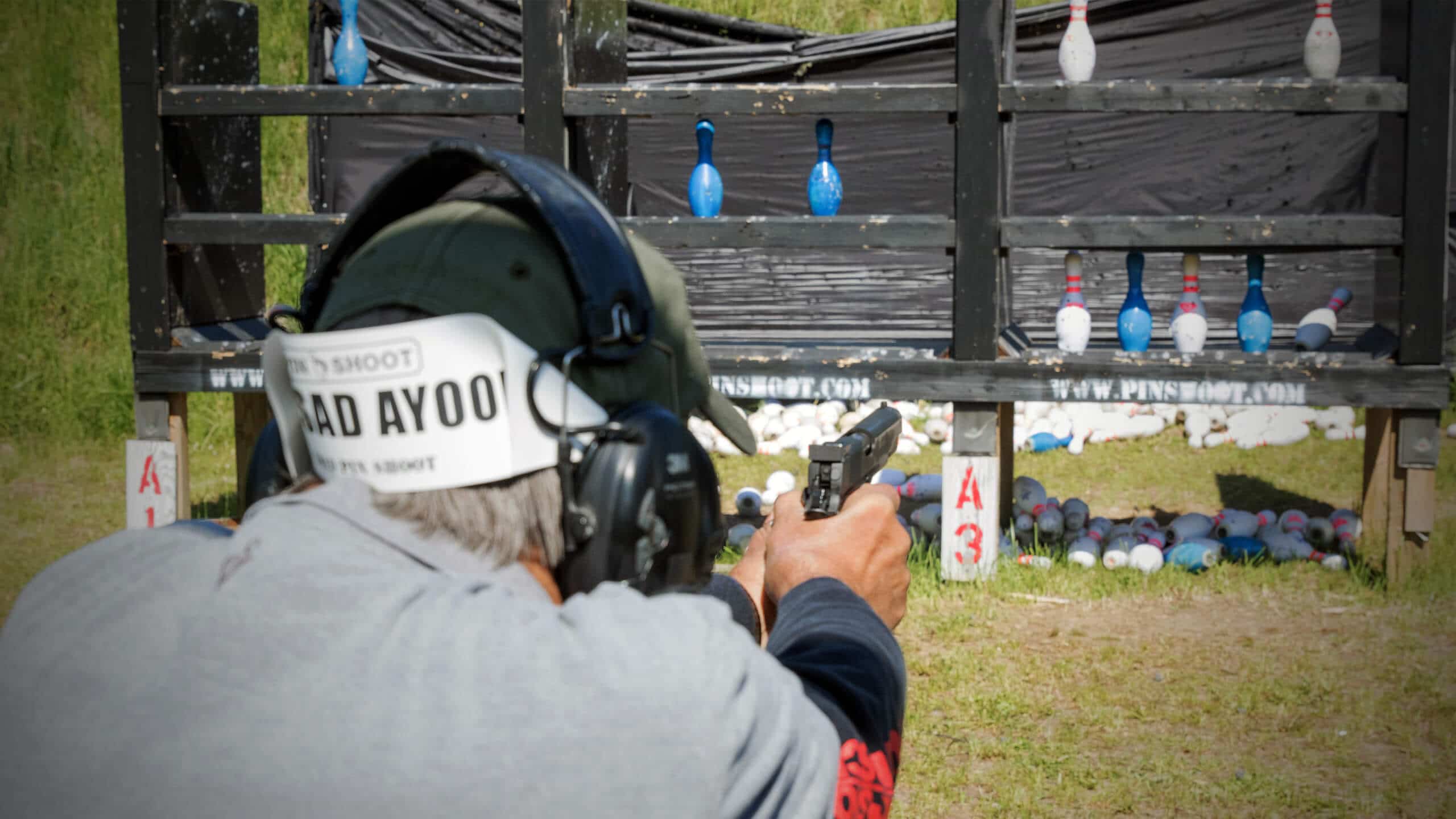

Leave a Reply